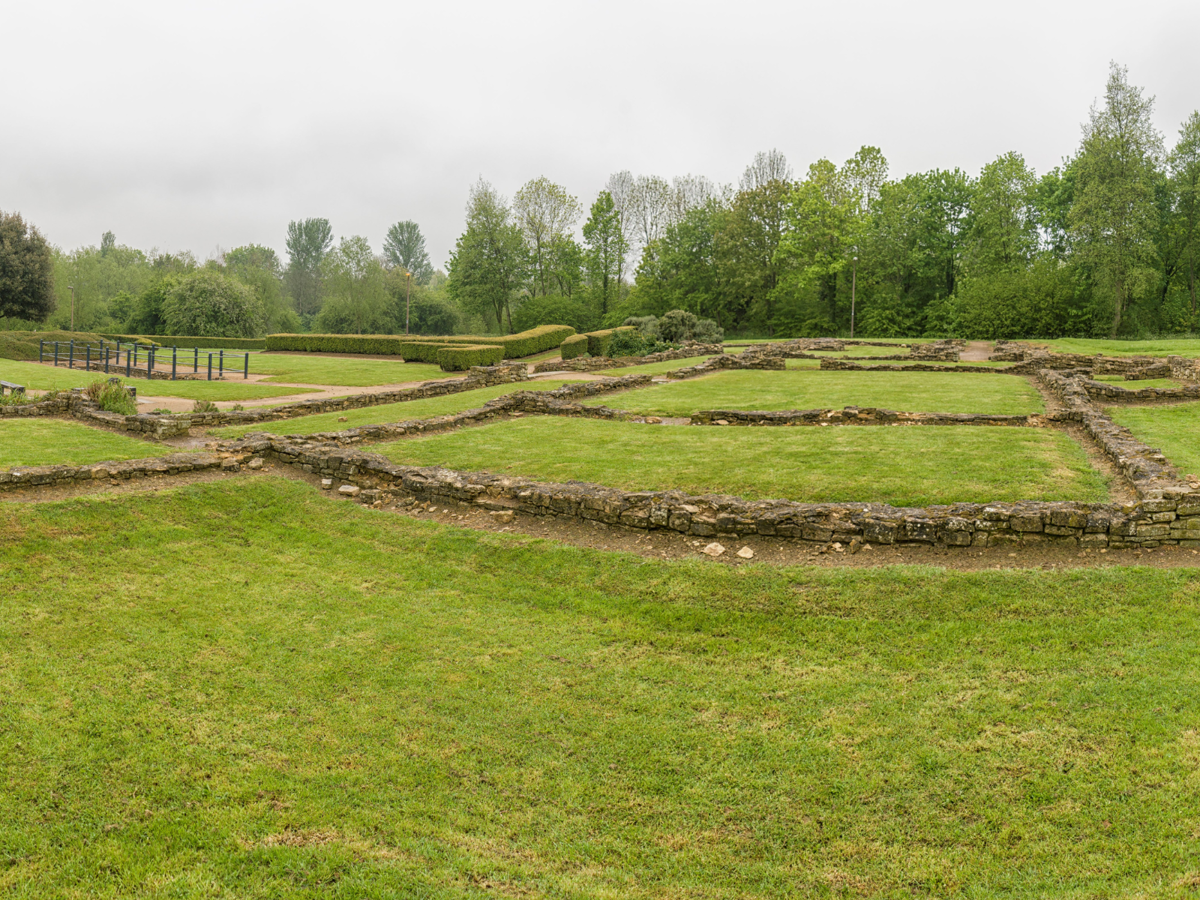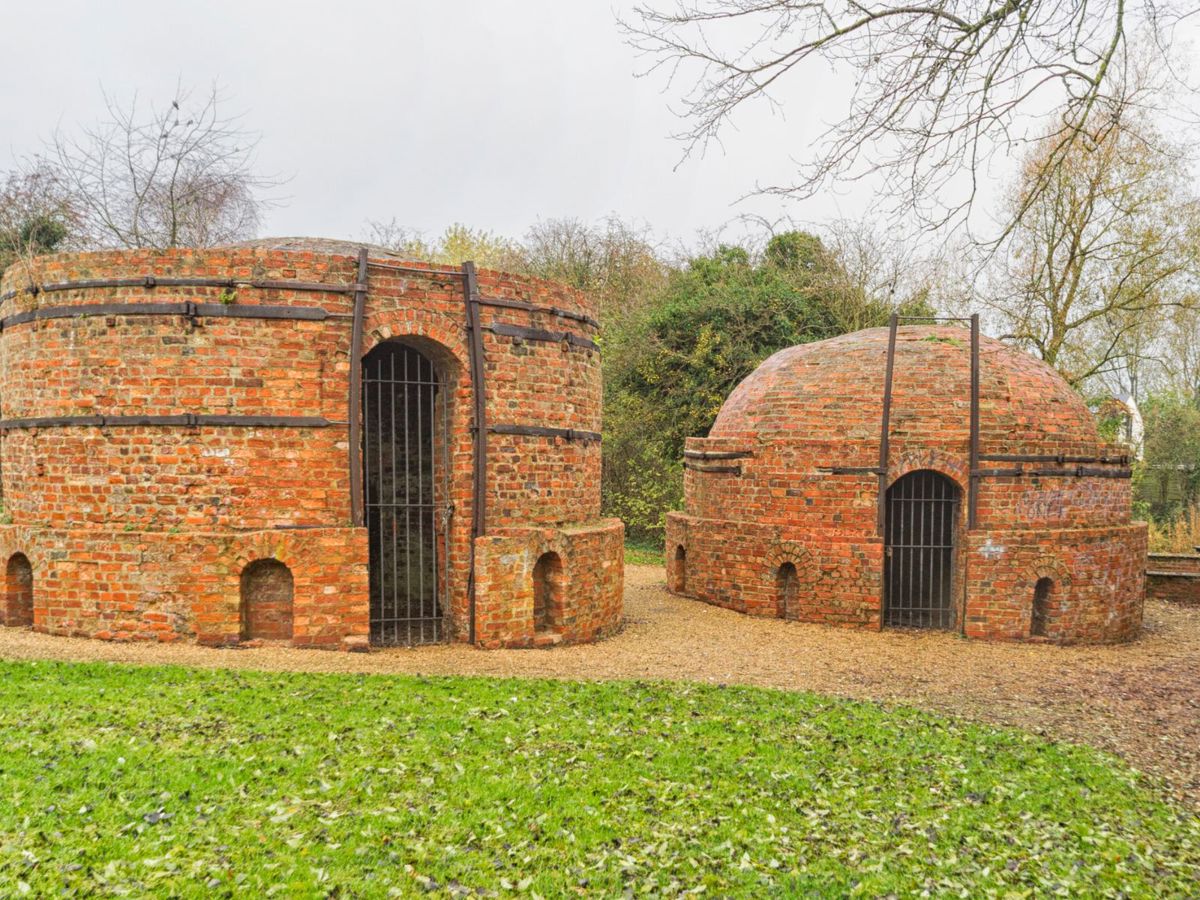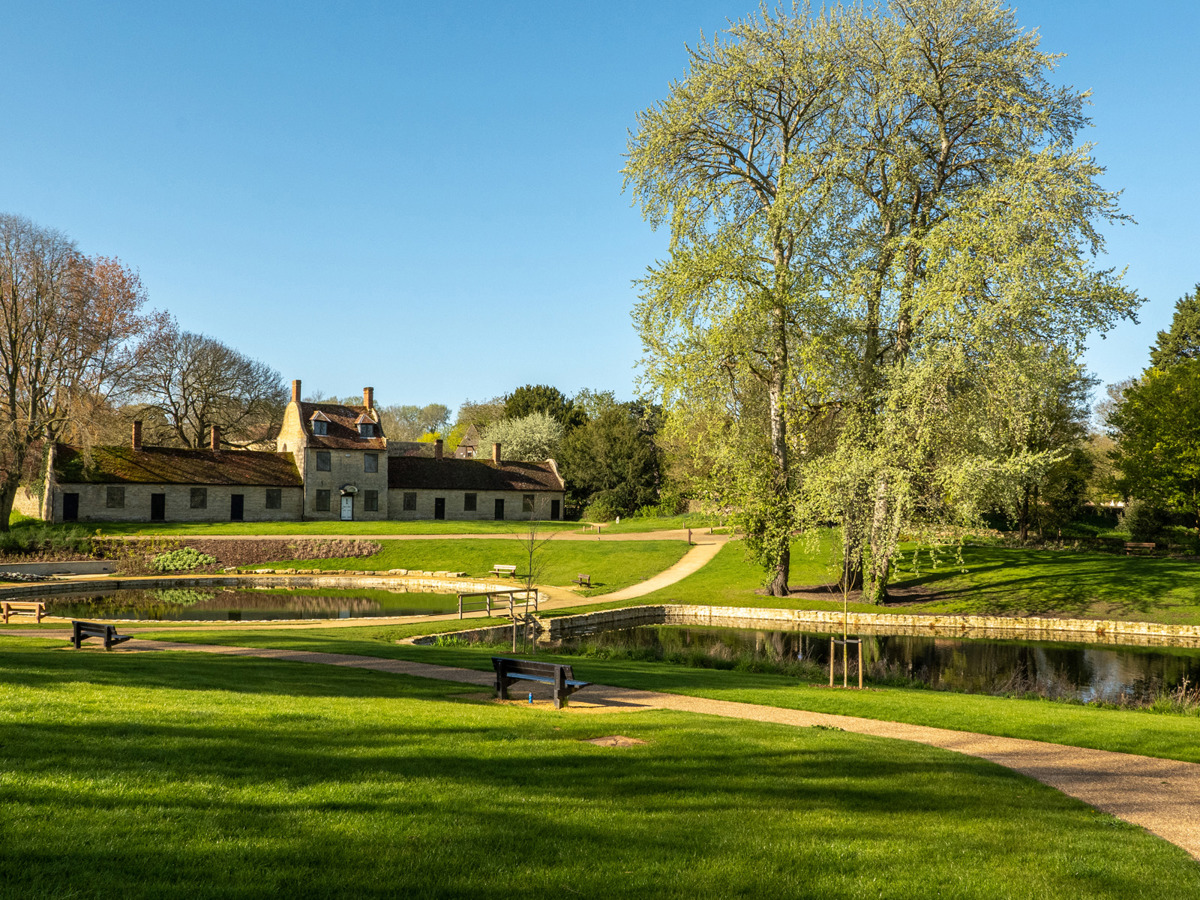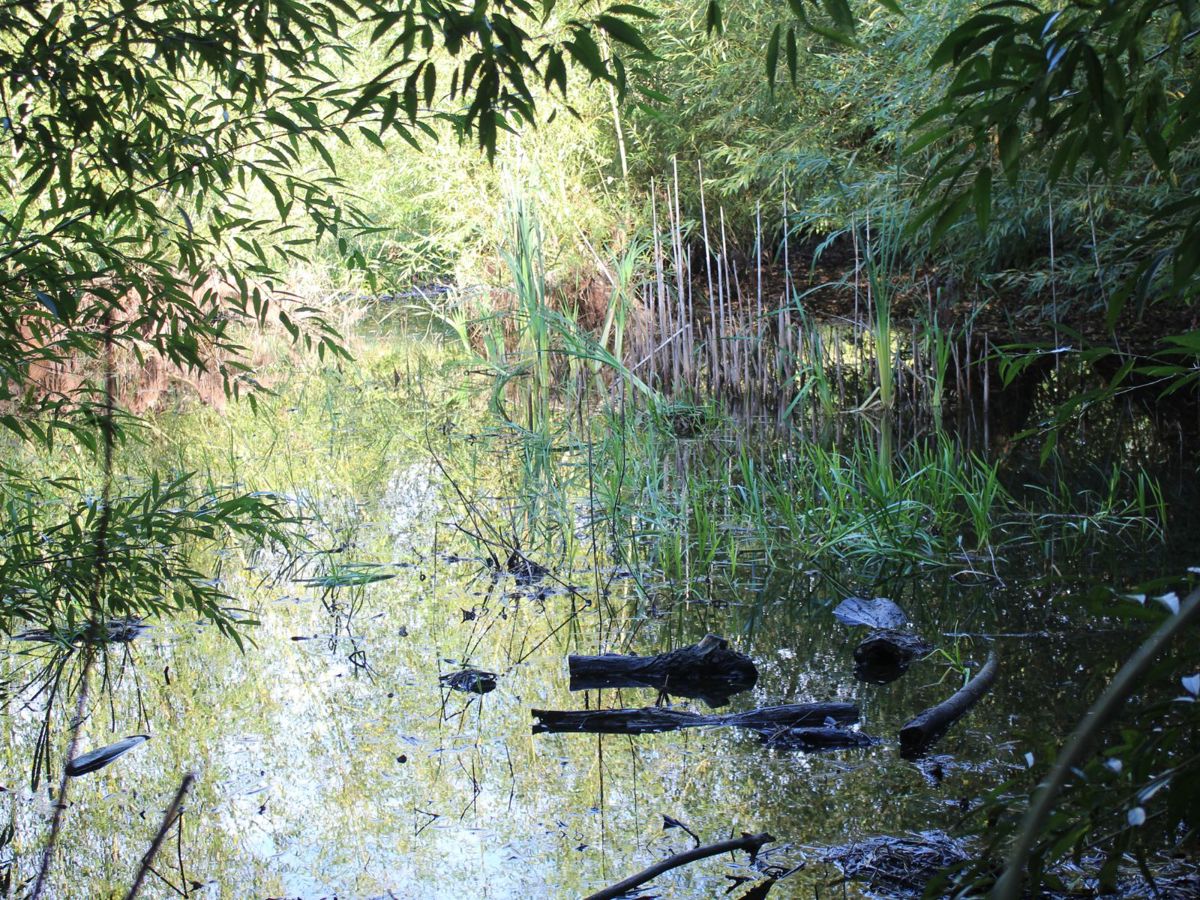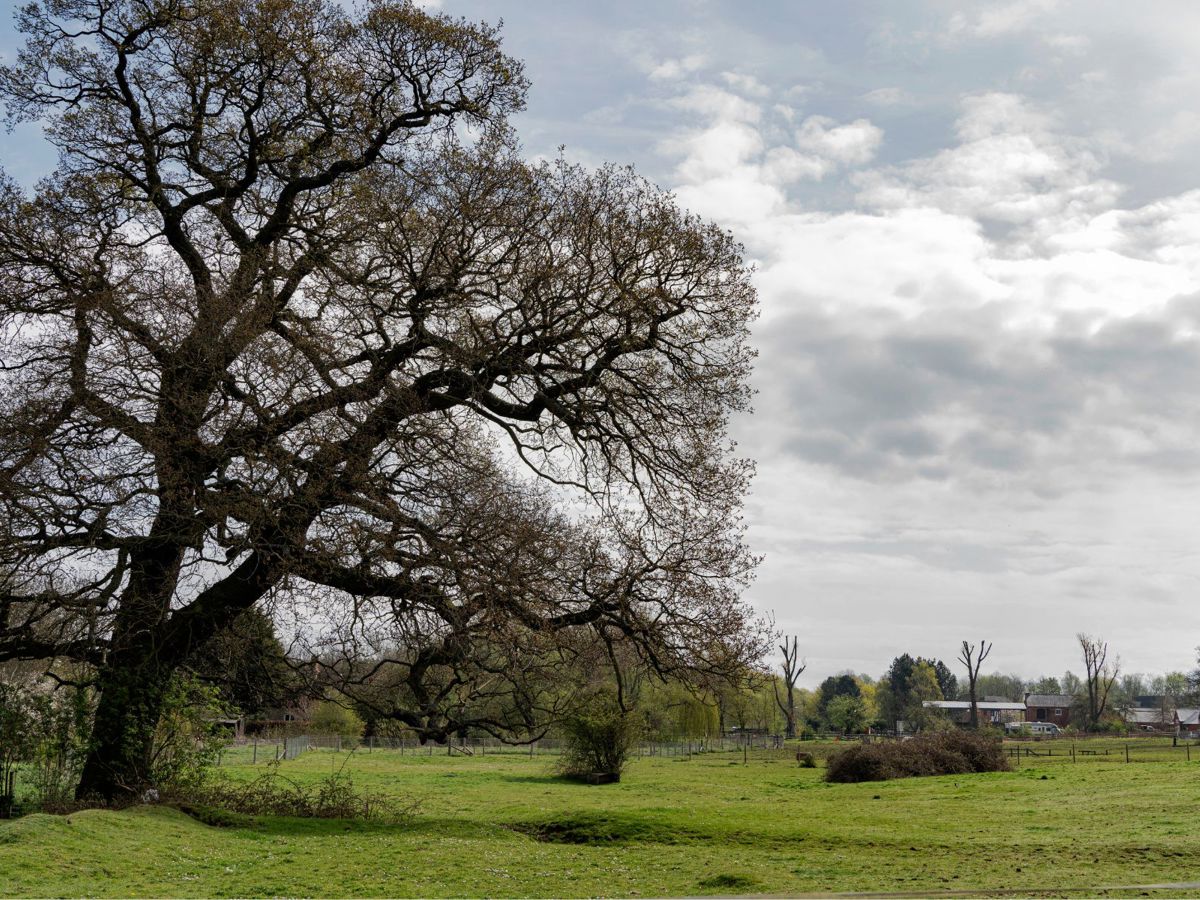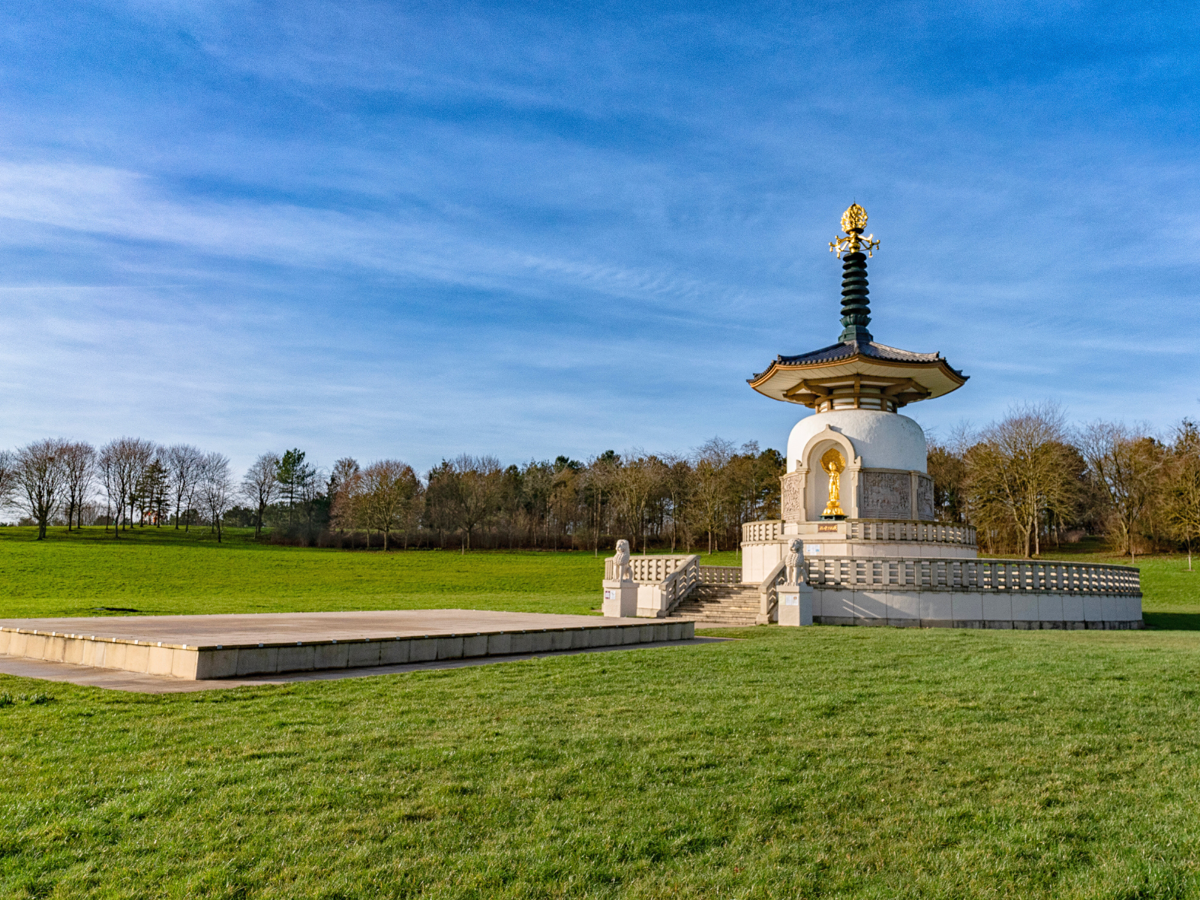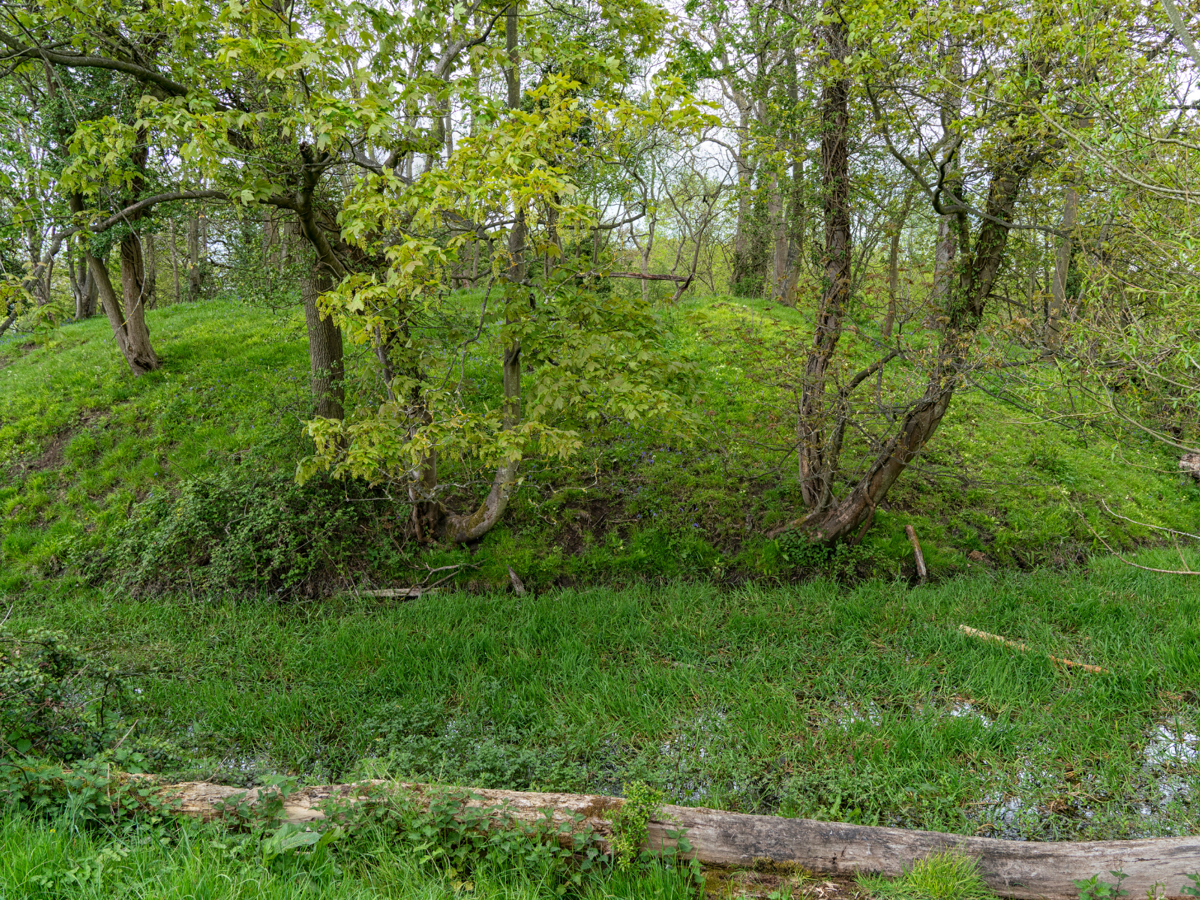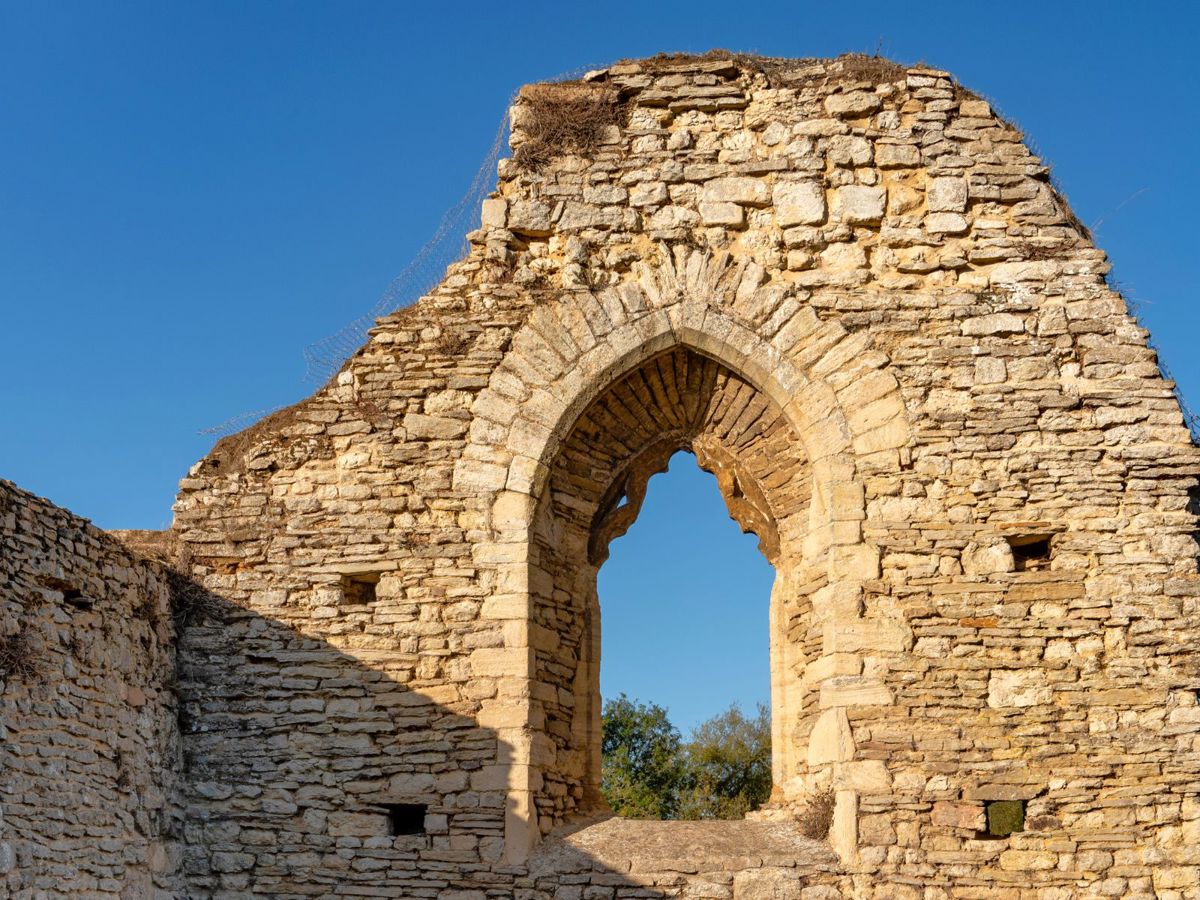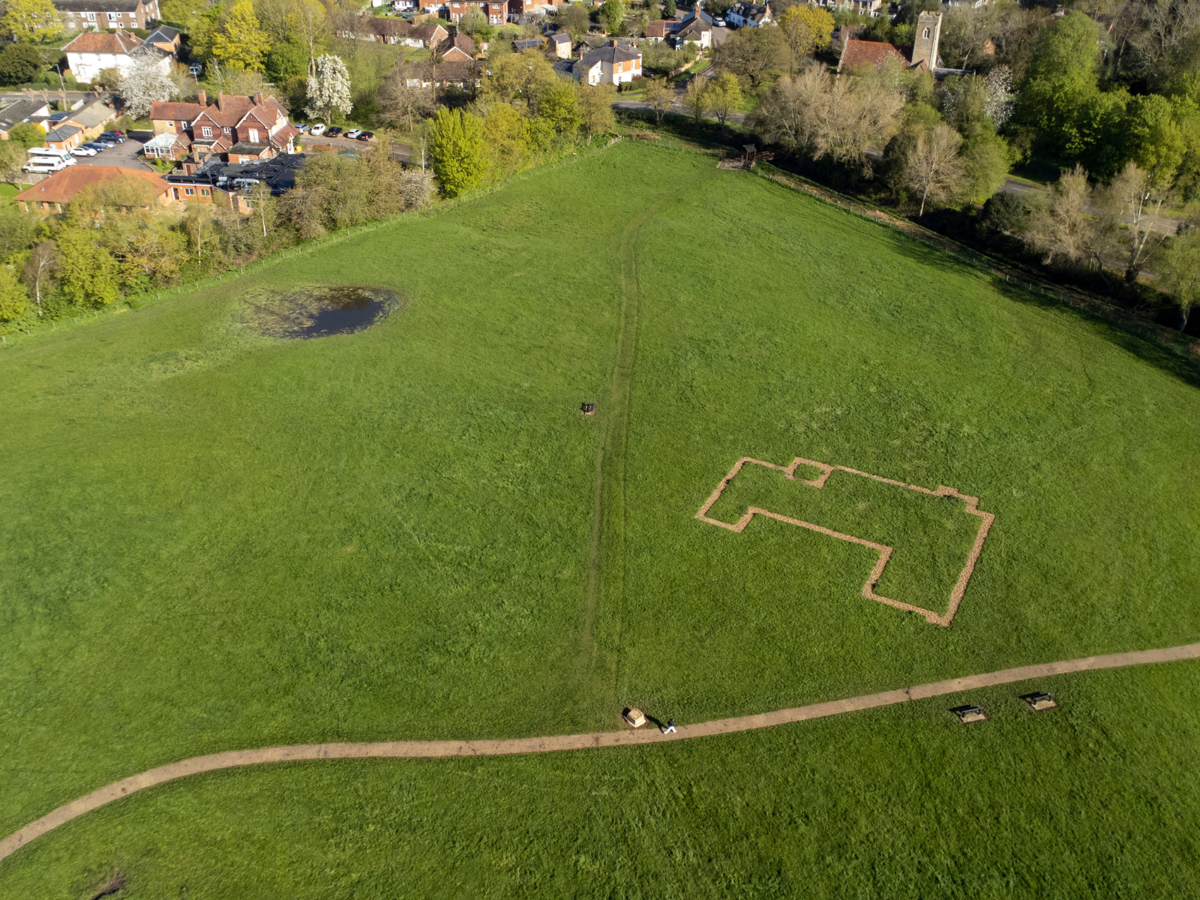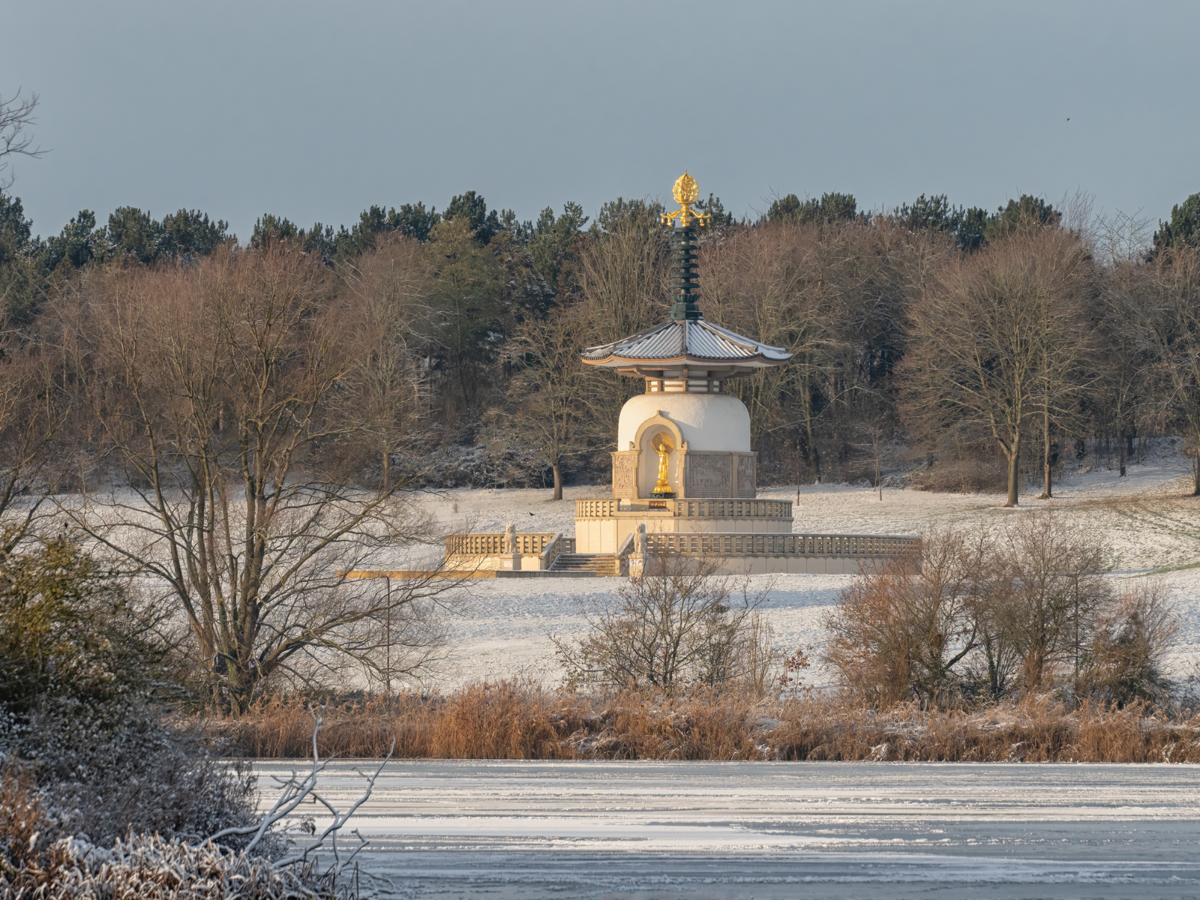
Milton Keynes Village Fish Ponds
The scheduled ancient monument in Middleton Park is made up of fish ponds and a moated platform.
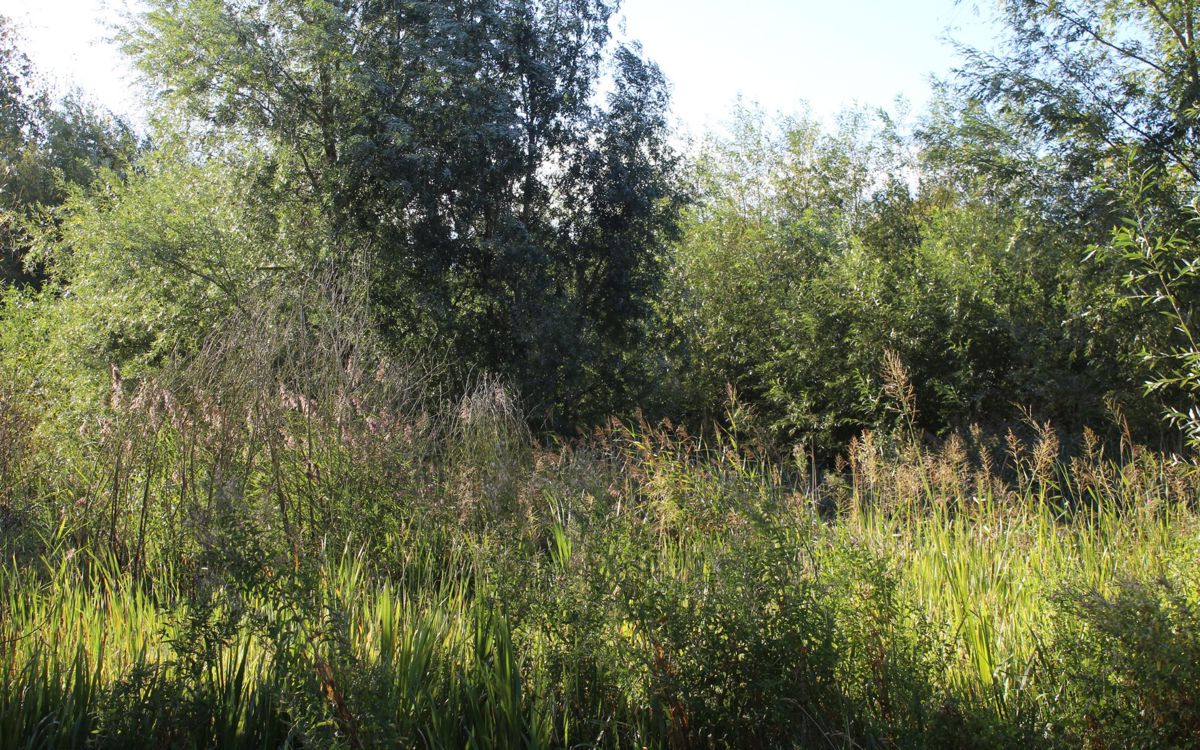
Willow trees and swathes of reeds largely hide the medieval fishponds in Middleton Park for much of the year, and many will walk past them without realising what they once were.
To find them, look out for islands of trees in the parkland at the back of the fourteenth-century church, All Saints.

These fishponds, like those at Woolstone, were used to store fish. Fish were an essential part of the medieval diet for the wealthy, as it was a Christian tradition to eat fish on a Friday during the period. The stocks of fish that were fattened-up here would have supplied the manor house and been used as gifts or traded. It was thought to have been built in the early 1300s by Philip De Aylesbury, who also owned Bradwell and Broughton.
The fishponds were all relatively rectangular and were fed from the water table (water rising from below). They were joined to each other by least (small channels) that could be opened and closed.
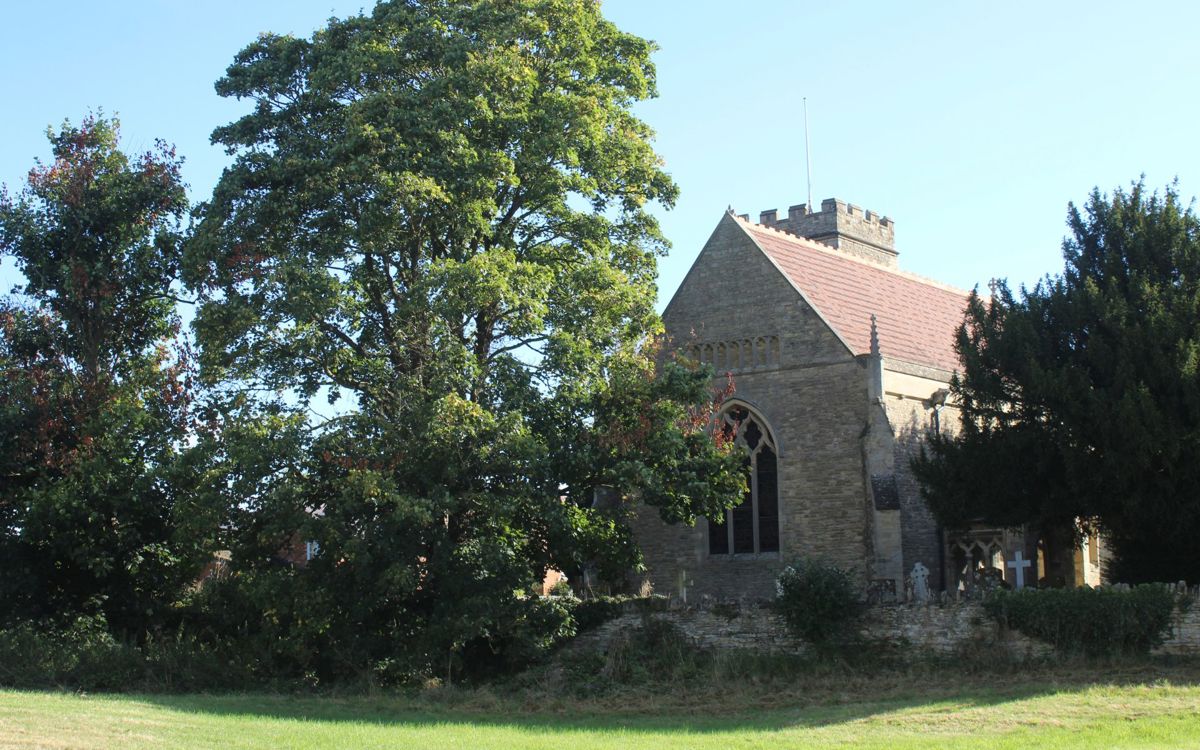
Near to the church is a large cluster of trees between the park and a gated field. This was a moated area, measuring 38 x 33m – a significant platform surrounded by water. What was built on top of the platform is unclear. They were usually where a manor house or religious building would have been built, but it may have just been for growing food. The moat was partly flattened and backfilled by a farmer in the 1940s.
The field surrounding the moated area was called Dovehouse Hop Yard, presumably because there was a dovecot here (for keeping doves for food), and hops were grown for making beer.
Confused by the names - Middleton and Milton Keynes Village?
First recorded as Mideltone, the settlement here was renamed Milton Keynes in the 1200s when the De Keynes family held the land. The present-day estate built around Milton Keynes Village recalled the older name of Middleton, which also seemed a logical name for the park here.
Milton Keynes village also, of course, gave the city its name. With potential arguments about what the new city should be called amongst the existing towns and villages, it was named after the smallest of the settlements, which also happened to be relatively central – Milton Keynes.
With thanks to Buckinghamshire Archaeological Society for allowing us to use their book: R.A. Croft and D.C. Mynard, Changing Landscapes, 1993.
Please see the Historic England website for further information.
Discover Milton Keynes' heritage by exploring the city's historical landmarks and scheduled ancient monuments.

